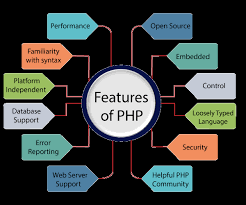PHP is a server-side scripting language that is open-source, interpreted, and object-oriented. As a result, it is used to create web applications (an application that executes on the server and generates the dynamic page.).
Rasmus Lerdorf created PHP in 1994, but it did not hit the market until 1995. PHP 7.4.0, which was released on November 28th, is the most recent version of PHP.
The following are some key points to remember about PHP:
- PHP is an abbreviation for Hypertext Preprocessor.
- PHP outperforms other scripting languages such as ASP and JSP.
- PHP is a server-side scripting language that is used to manage the website's dynamic content.
- PHP can be included in HTML.
- PHP is a simple and easy-to-learn programming language.
PHP is a server-side scripting language used to create dynamic web applications that use the MySQL database. It manages the website's dynamic content, database, and session tracking. PHP allows you to create sessions. It has access to the cookies variable and can also set cookies. It is beneficial to encrypt the data and apply validation. PHP supports a variety of protocols, including HTTP, POP3, SNMP, LDAP, IMAP, and many others. You can control the user's access to certain pages of your website by using the PHP programming language. Because PHP is simple to install and configure, it is the best language to learn.
PHP is a popular programming language due to its ease of use and open source nature. Some important PHP features are listed below:
PHP, HTML, CSS, Web Development, WordPress, and Application Development are all examples of programming languages. For our candidates, SoftLoom IT Solutions offers PHP Advanced training, CSS3, AJAX, JQuery, Web Application development, and website development. We have a qualified and dedicated faculty team for PHP training, advanced training in Cake PHP, WordPress, Web-based CMS developments, Content Management System developments, programming and coding for web-based applications, website development, and embedded programming.



Comments
Post a Comment